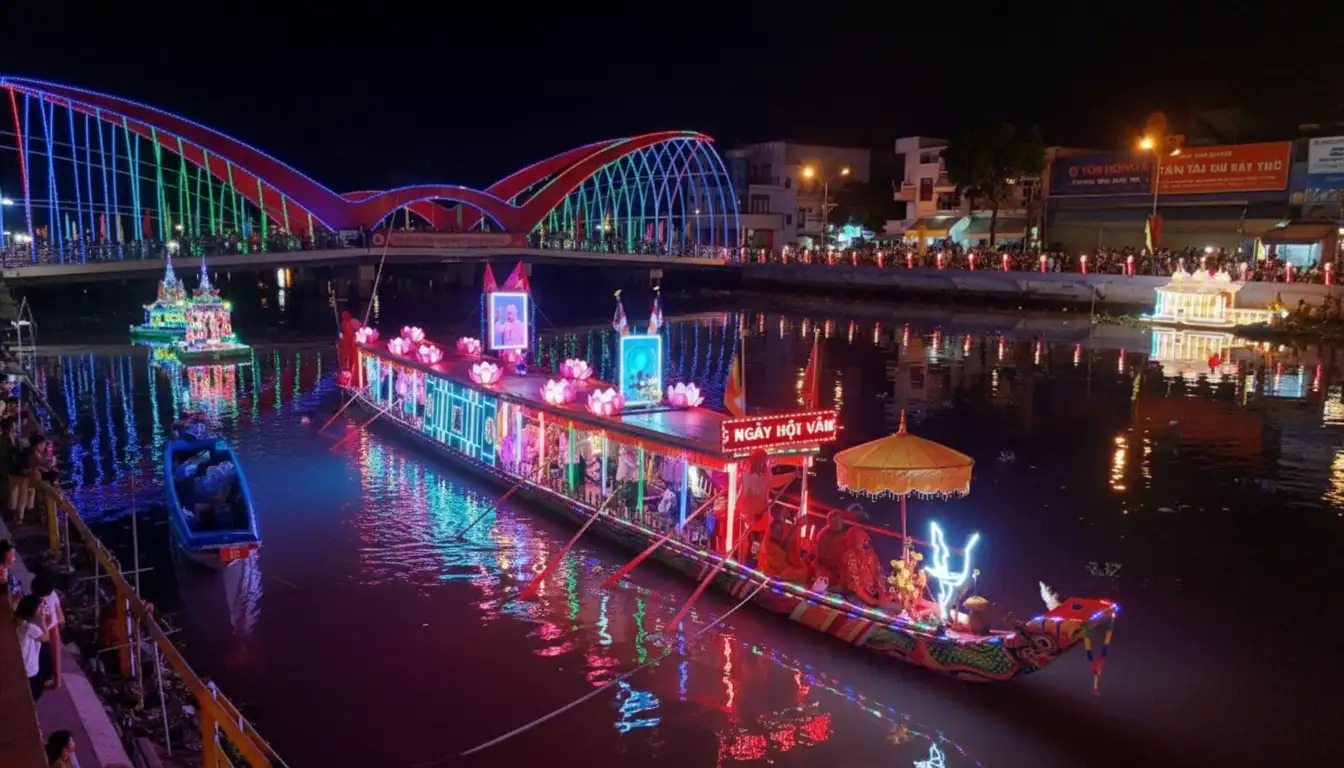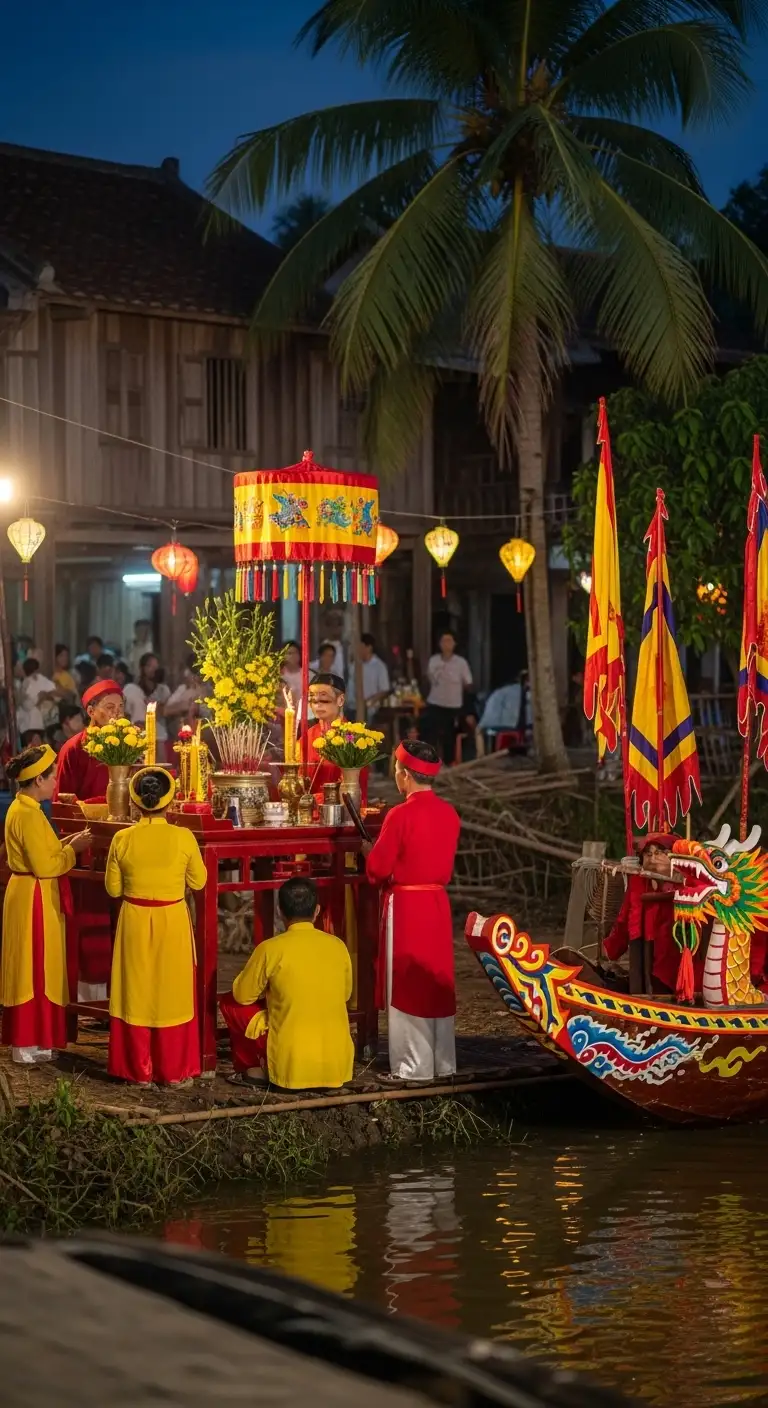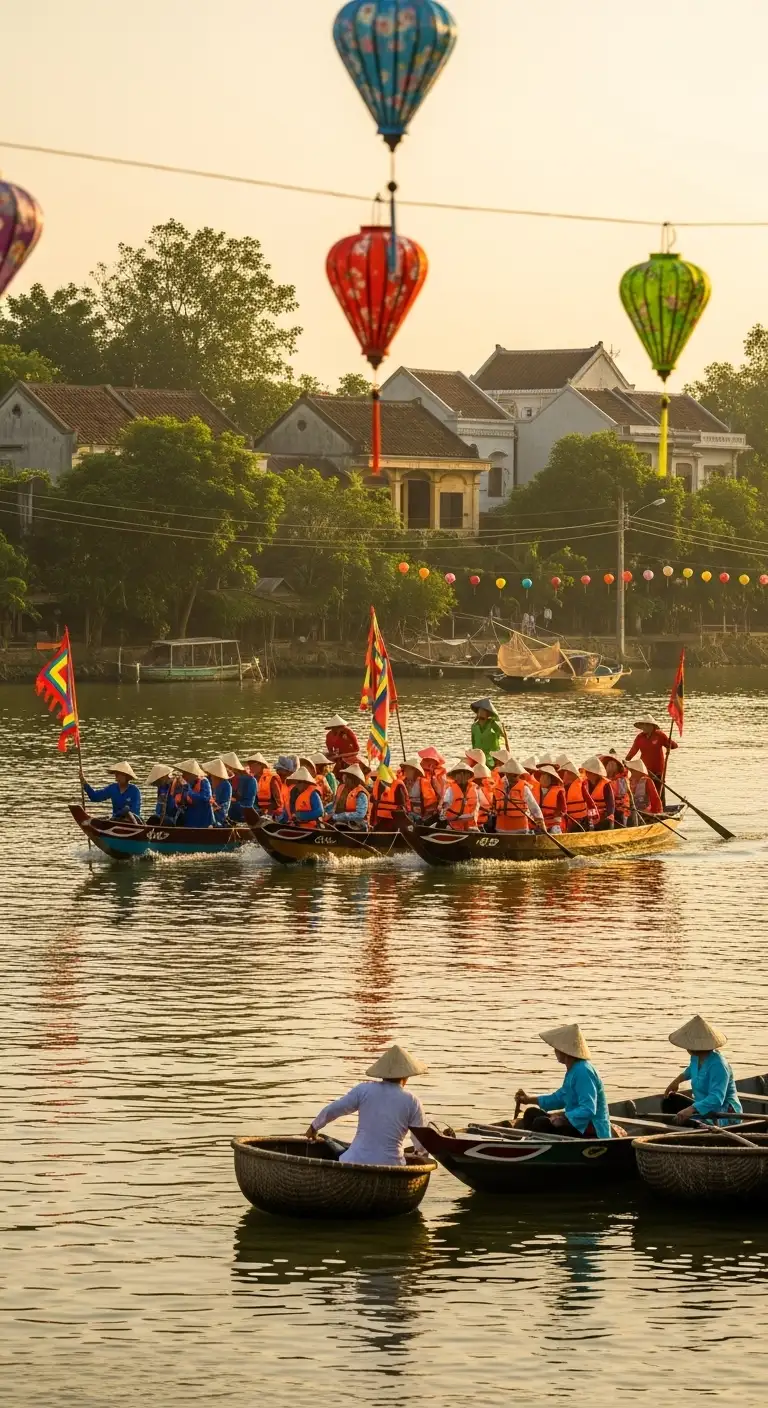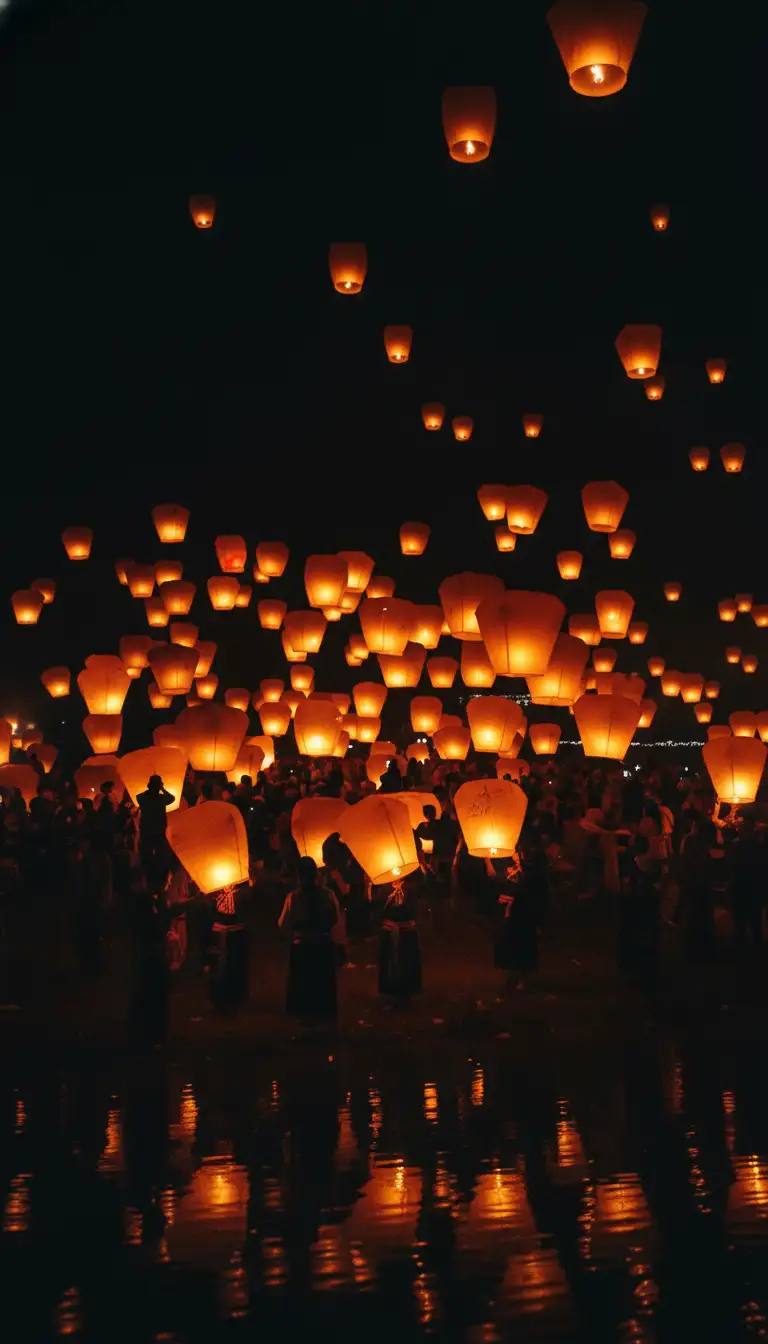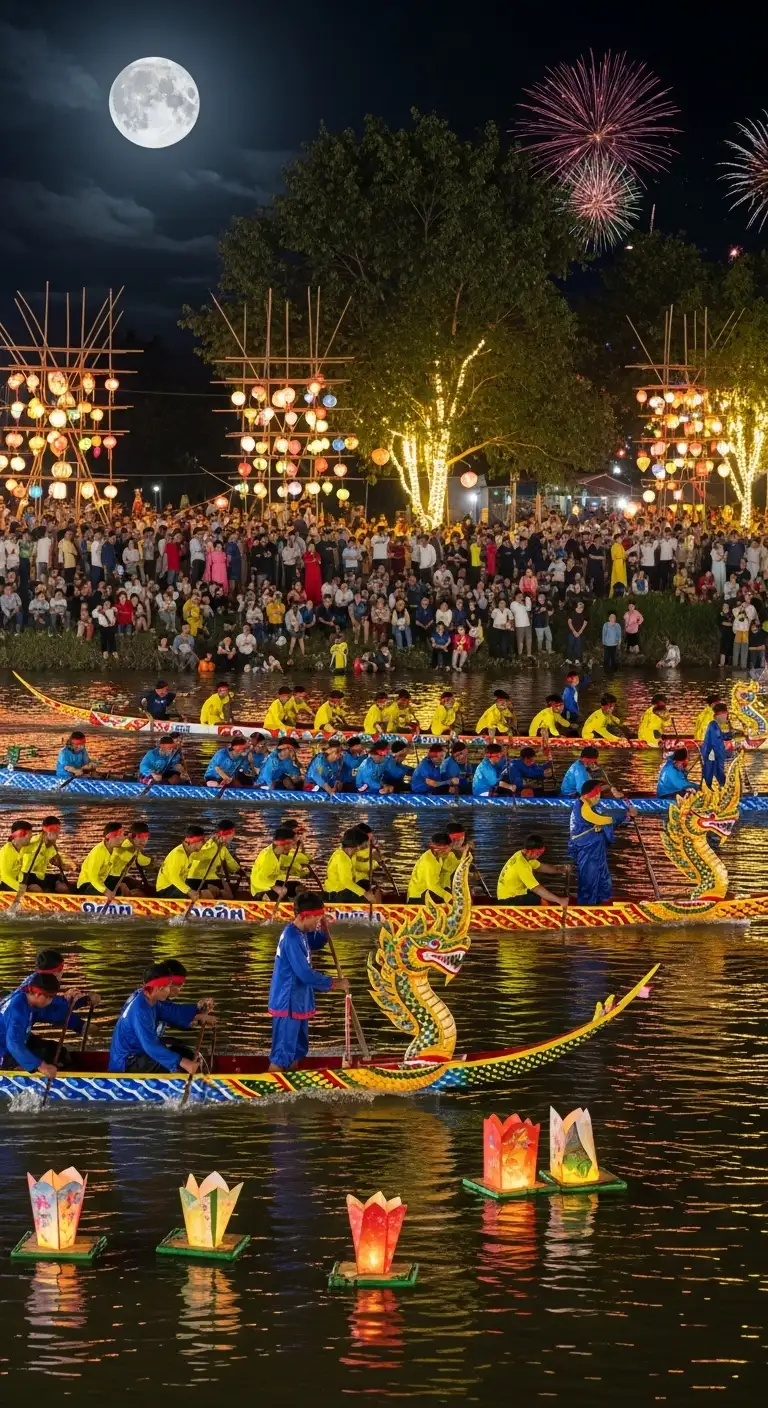Quick Facts
| Data Field (Title) | Content | Icon/Note |
|---|---|---|
| Vietnamese Name | Lễ hội Oóc Om Bóc | Also known as Lễ Cúng Trăng (Moon Worship Festival). |
| Ethnic Group | Khmer People (in Southern Vietnam). | The largest and most vibrant festival of the Khmer community. |
| Location | Mekong Delta, primarily in Sóc Trăng and Trà Vinh Provinces. | The main event often takes place in Sóc Trăng. |
| Timing | 15th day of the 10th Lunar Month (usually in October or November). | Marks the transition from the rainy season to the dry season and expresses gratitude for the harvest. |
| Significance | A ceremony to worship the Moon Deity, who is believed to control the weather and crops. |
I. Overview: Thanking the Moon Deity
The Oóc Om Bóc Festival is the most important annual event for the Khmer people in the Mekong Delta. Held under the full moon of the tenth lunar month, the festival serves as a ritual to express deep gratitude to the Moon Deity (Thần Mặt Trăng) for blessing them with good weather, successful harvests, and prosperity throughout the year.
The celebration is rich in unique Khmer traditions, combining solemn spiritual ceremonies with exhilarating cultural and sporting activities.
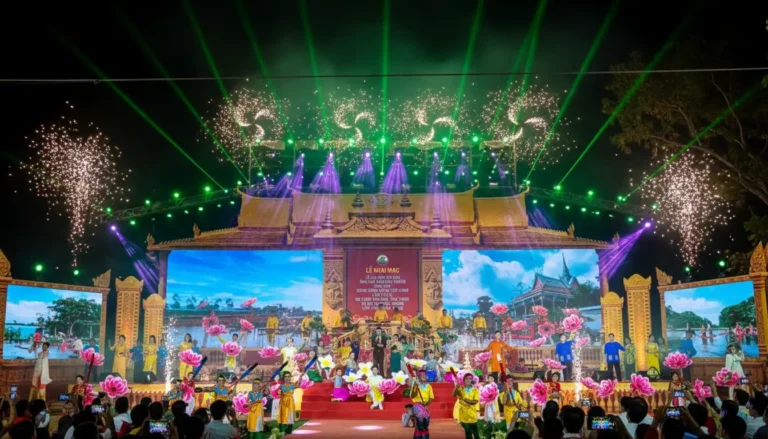
II. Key Festival Activities
The festival is divided into two parts: the solemn ceremony (Oóc Om Bóc) and the vibrant public celebration.
1. The Moon Worship Ceremony (Lễ Cúng Trăng)
The Ritual: Held on the evening of the full moon (15th day), the ceremony takes place in pagoda courtyards or communal houses.
The Offerings: An altar is prepared with symbolic offerings, including Cốm Dẹp (flattened green rice flakes), bananas, coconuts, sweet potatoes, and taro.
The Blessing: When the moon is at its highest, the elder or a respected Acha (monk/leader) leads the offering, after which the young rice flakes are fed to the children. This is accompanied by asking the children for their wishes, symbolizing hope for a healthy and prosperous year ahead.
2. Ngo Boat Race (Đua Ghe Ngo)
The Highlight: The most anticipated and spectacular public event is the Ghe Ngo Boat Race. This is often viewed as a ritual to send the Water God and the Dragon King (Naga) back to the sea after the harvest.
The Boats: The Ghe Ngo are unique, long, and narrow dugout canoes, often measuring 22–24 meters long and decorated with the head of a Naga serpent at the bow.
The Race: Crewed by 50–60 rowers, the races are fiercely competitive and incredibly energetic, drawing massive crowds to the riverbanks who cheer, play music, and create an electric atmosphere.
3. Lantern Release (Thả Đèn Lông)
The Spectacle: The festival features a beautiful ceremony of releasing lanterns. In many areas, flower lanterns (Lôi Prôtíp) are released onto the water (such as the Maspéro River or Ba Om Lake) to pay tribute to the gods and dispel misfortune.
The Scene: Thousands of flickering lights floating on the water create a magical and shimmering display, carrying the wishes and prayers of the Khmer community.
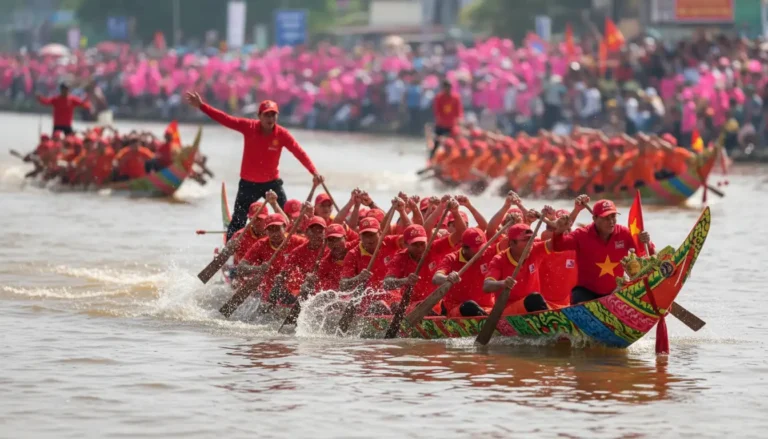
III. Visitor Information
| Guide Field | Details |
|---|---|
| Main Venue | Sóc Trăng Province typically hosts the largest and most concentrated events, particularly the final races. |
| Experience | Immerse yourself in the unique culture by observing the intricate Moon Worship ceremony and joining the enthusiastic crowds for the boat races. |
| Local Culture | Enjoy traditional Khmer folk games like co ốc (snail chess) and traditional dances like the Răm Vông. |
| Cuisine | Be sure to try local Khmer delicacies, especially the glutinous rice dishes prepared for the festival, such as Cốm Dẹp. |
| Best Time | Arrive in the days leading up to the 15th lunar day to experience the cultural activities, and plan to stay for the night of the full moon ceremony and the Ngo Boat Races. |
